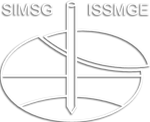Comparison of Various Pressuremeter Tests for Characterizing Sensitive Lacustrine Clays
Comparison of Various Pressuremeter Tests for Characterizing Sensitive Lacustrine Clays
This contribution presents the results of an extensive in-situ testing campaign conducted at a test site near Rosenheim, southern Germany, to characterize the mechanical properties of a sensitive soft lacustrine clay. The investigation evaluates three different pressuremeter testing (PMT) technologies, including Self-boring pressuremeter (SBPM), Menard-PMT, and Pencel-PMT. Our comparison focuses on the influence of the different probe insertion methods specifically for each of the three PMT technologies on the measurements and consequently the data interpretation for deriving classical soil mechanics parameters. The PMT probe insertion processes, integral to each test, introduce varying degrees of soil disturbance. Particularly in sensitive soft soils, the disturbance associated with the boring (SBPM) and push-in process (Menard-PMT, Pencel-PMT) as well as the particular features of the probe significantly influence the soil-specific parameters evaluated from the PMT results. The interpretation of the PMT is based on the cavity expansion theory and focuses on the semi-empirical estimation of the soil stiffness, soil strength (limit pressure) and the in-situ horizontal stress. In this study, we assess the advantages and shortcomings, hence the applicability of the considered techniques for the investigation of the Rosenheim soft sensitive clays. We found that the disturbance during PMT installation and eventually the device features significantly influence the lift-off pressure and the stiffness derived from the pressuremeter curve. On the contrary, the limit pressure was similar for the three devices used in this study. Further numerical investigations with advanced constitutive models will be carried out to further understand the influence of the PMT installation on the pressuremeter results.
Seyedmohsen Miraei; Ba-Phu Nguyen; Roberto Cudmani; Patrick Berz; Antal Csuka; Stefan Vogt
8th International Symposium on Pressuremeters (ISP2025)
Site Characterization and parameter determination
